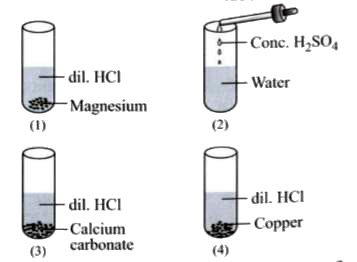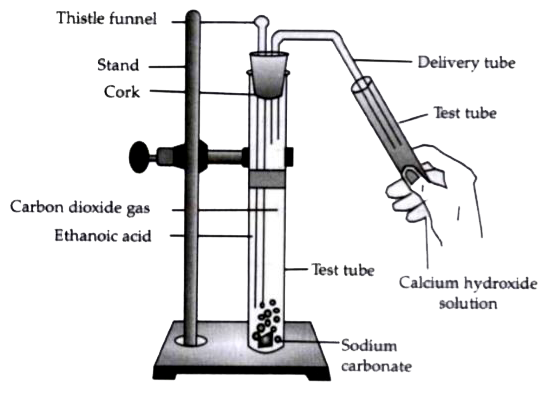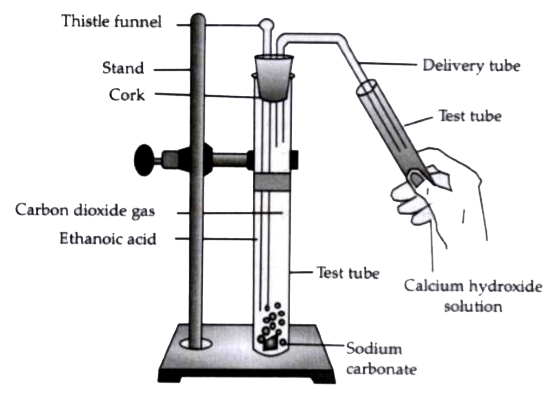Observe the given figures showing the mixing of chemicals in four different test tubes.

Which of the following statements is/are correct?
I. H2 gas is evolved in test tube (I).
II. Test tube (2) will burst as a large amount of heat is evolved.
III. No reaction takes place in test tube 3.
IV. In test tube 4, yellowish-green chlorine gas is evolved.
A
II and IV only
B
I only
C
II and III only
D
I and IV only
Video Solution
Text Solution
The correct Answer is:B
When in water, few drops of acid are added, it produces less heat. When calcium carbonate reacts with dil. HCI, carbon dioxide gas is produced. Copper does not react with dil. HCI as copper is less reactive than hydrogen.
|
Updated on:21/07/2023
Topper's Solved these Questions
- BOOK - SCIENCE OLYMPIAD FOUNDATION CHAPTER - NSO QUESTION PAPER 2019-20 SET BEXERCISE - ACHIEVERS SECTION1videos
NSO QUESTION PAPER 2019-20 SET B
- BOOK - SCIENCE OLYMPIAD FOUNDATION CHAPTER - NSO QUESTION PAPER 2019-20 SET AEXERCISE - ACHIEVERS SECTION1videos
NSO QUESTION PAPER 2019-20 SET A
- BOOK - SCIENCE OLYMPIAD FOUNDATION CHAPTER - NSO QUESTION PAPER 2020-21 SET AEXERCISE - SCIENCE8videos
NSO QUESTION PAPER 2020-21 SET A
Similar Questions
Knowledge Check
- Question 1 - Select One
Which of the following statements is correct with reference to a test tube baby ?
AFertilisation of the egg is completed outside the body , the fertilised egg is then placed in the womb of the mother where the gestation is completedBFertilisation of the egg is completed in the female genital track. It is then taken out and grown in a large test tubeCA prematurely born boby is reared in an incubatorDFertilisation of the egg and growth of the embryo is completed in a large test tube - Question 2 - Select One

Name the gas released in test tube B.AOxygenBCarbon dioxideCHydrogenDNitrogen - Question 3 - Select One
Which of the following can not evolve more than one gas (vapour) if heated in dry test tube.
AnaNO3(s)BMgCO3(s)CFeSO4(s)D(NH4)2Cr2O7(s)


